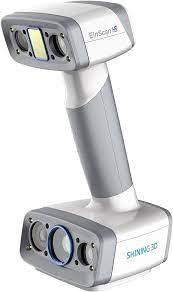The Power of 3D Scanning: Capturing the World in Three Dimensions

Introduction
In today's rapidly advancing technological landscape, 3D scan has emerged as a transformative tool that allows us to capture and recreate the physical world in exquisite detail. This innovative technology has found applications across a multitude of industries, from engineering and healthcare to art and entertainment. In this article, we will explore the world of 3D scanning, its technology, applications, and the impact it has on shaping our digital future.
Understanding 3D Scanning
At its core, 3D scanning is a process of capturing the shape and details of an object or environment and converting them into a digital 3D model. This is achieved using a range of technologies, including:
- Laser Scanning: Laser scanners emit laser beams onto an object's surface and measure the time it takes for the laser to bounce back. This data is used to create a 3D point cloud, which represents the object's shape.
- Structured Light Scanning: Structured light scanners project a pattern of light onto the object's surface and use cameras to capture how the pattern distorts. This distortion provides information about the object's shape.
- Photogrammetry: Photogrammetry relies on taking multiple photographs of an object or scene from different angles. Special software then uses these images to create a 3D model by triangulating the positions of common points in the photos.
- Time-of-Flight (ToF) Scanning: ToF scanners use infrared light to measure the time it takes for light to travel to an object and back. This data is used to create a depth map that represents the object's shape.
Applications of 3D Scanning
The versatility of 3D scanning technology has led to a multitude of applications in various industries:
- Manufacturing and Engineering: 3D scanning is crucial for quality control, reverse engineering, and creating precise CAD models of physical objects.
- Architecture and Construction: Architects and engineers use 3D scanning to capture as-built environments, monitor construction progress, and perform site assessments.
- Healthcare and Medicine: These scanners are vital for creating customized implants, prosthetics, and orthodontic devices. They are also used for patient-specific surgical planning and documentation.
- Art and Cultural Heritage Preservation: Museums and institutions rely on 3D scanning to digitize and preserve historical artifacts, artwork, and archaeological findings.
- Entertainment and Gaming: In the entertainment industry, 3D scanning is instrumental for character modeling, prop design, and animation.
Benefits of 3D Scanning
The advantages of 3D scanning are numerous and include:
- Precision and Detail: 3D scanning provides incredibly accurate and detailed representations of real-world objects.
- Efficiency: These devices expedite the scanning process, reducing the time and costs associated with traditional methods.
- Quality Data: Advanced sensors and technology ensure high-quality data suitable for various applications.
- Innovation: 3D scanning empowers users to bridge the gap between the physical and digital worlds, fostering creativity and innovation.
- Interdisciplinary Applications: The versatility of 3D scanning allows for cross-disciplinary applications in various fields.
Future Prospects
As technology continues to advance, 3D scanning is expected to evolve in several ways:
- Enhanced Automation: Automation through artificial intelligence (AI) will streamline data processing, improving efficiency and accuracy.
- Miniaturization: 3D scanners will become more portable and user-friendly, enabling wider adoption across industries and applications.
- Integration with Emerging Technologies: As augmented reality (AR) and virtual reality (VR) gain traction, 3D scanning will likely integrate with these technologies, opening up new applications.
Conclusion
3D scanning has revolutionized the way we interact with the physical world, offering unparalleled precision and versatility. This technology is essential to a wide range of industries, from manufacturing to healthcare and entertainment, enabling innovation and efficiency. As technology continues to progress, 3D scanning is poised to become an even more indispensable tool for bridging the gap between the physical and digital realms.
- Questions and Answers
- Opinion
- Motivational and Inspiring Story
- Technology
- Live and Let live
- Focus
- Geopolitics
- Military-Arms/Equipment
- Securitate
- Economy
- Beasts of Nations
- Machine Tools-The “Mother Industry”
- Art
- Causes
- Crafts
- Dance
- Drinks
- Film/Movie
- Fitness
- Food
- Jocuri
- Gardening
- Health
- Home
- Literature
- Music
- Networking
- Alte
- Party
- Religion
- Shopping
- Sports
- Theater
- Health and Wellness
- News
- Culture

